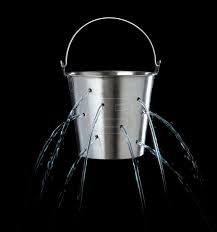 We’ve been using scorecards for decades for everything from education and sports to job evaluations and customer satisfaction ratings.
We’ve been using scorecards for decades for everything from education and sports to job evaluations and customer satisfaction ratings.
Companies use scorecards to rate their sales clients so why shouldn’t development directors and nonprofit CEOs use them for gift prospects?
Ellen Bristol, author and principal consultant at Bristol Strategy Group has just released a new book, Fundraising the SMART Way™, which celebrates the power of the prospect scorecard group policies. The chief benefit?
You don’t waste valuable development time on donors that are wrong for your organization.
Fundraising the SMART Way™
This methodology is based on the durable and proven disciplines of performance management. It provides the management controls “…so sorely needed to acquire and sustain funding in a significantly more rational, objective, and productive manner,” claims the author herunterladen.
Bristol defines the acronym SMART this way:
Strategic
Measurable
Donor-Action focused
Realistic
Time defined
The SMART Way™ model establishes two critical components that are typically ignored or undervalued. There are the two components that are the centerpiece of this model. In this article, I’m going to highlight the first component—Bristol’s prospect scorecard microsoft word 2013 kostenlosen für mac.
The Ideal-Funder Profile/Scorecard
The ultimate goal in fundraising is to have long-term engagement and quality time investment in order to raise the most money in the most efficient manner. The SMART Way™ Prospect Scorecard, tells you “which funding prospects justify the investment of your scarce and precious development time. The Scorecard ranks each major prospect as an A, B, C, or D for his/her potential lifetime value. As and Bs offer more potential at less cost.
Bristol offers nine principles on which to base your Scorecard:
Many minds make light work: Glean perspectives from varying staff members when brainstorming.
Analyze past successful relationships first: Clone your best funders.
Seek the answers you want, not questions: Try to determine if your funder has the qualities you seek.
Choose a few vital indicators, like the donor’s passion for the cause and past giving, not his/her birthday.
Create once; use often.
Develop one benchmark for all solicitors in order to gain objective insights.
All statements are required—values, facts, dangers.
Pay attention to rank (A, B, C, D) and score (points within the rank that include subtracting for dangers). (See examples below.)
Decide when to Scorecard, when not to bother: Only Scorecard for major funders.
The Scorecard is based on these three items:
the value statements given by your prospects on why they are interested in your charity and giving,
fact statements about giving capacity and wealth profile, and
danger signs that deter you from pursuing a prospect who will offer less return on your investment.
The Scorecard helps you ask the right questions of potential donors to see if they match well and market potential donors more effectively.
Value statements
The scorecard should include 5-10 of your most important value statements. These are created from your descriptions of ideal donors that exchange value. They should include how the value-sought from your donors matches with your value-added. Staff pursuing the donors should develop questions to get to the answers needed in the Scorecard. They can start with versions of the questions listed in the “value-sought analysis” bullet above about positive and negative motivators (what they want to achieve and avoid with their money) and choice of charity. Helpful sentence starters are “Funder prefers…,” “Funder is committed to…,” and “Funder is passionate about….” Examples of value statements developed by an arboretum are, “Donor is passionate about gardening and wants to inspire younger people to feel the same way” and “Donor is concerned about plant species and habitats.”
Fact statements
Next, create 5-10 specific fact statements, such as, “Donor has capacity to give at least $100,000 per year” and “Donor has volunteered, taught classes or written articles for our membership magazine.”
Danger signs
Then, list 5-10 danger signs, such as, “Big talk, no action” and “Over-committed to too many organizations.” The development staff should discuss how to rank the answers on a scale of 1-5 (e.g., 5=prospect’s net worth is $10 million or above; 4=net worth is $5 to $9.9 million, etc.), “5” meaning the
prospect fits the criteria well and is a close match.
Weighting and scoring
With all three categories, you need to assign importance weights on a scale from 1 to 5, where “5” is “most important.” Thus, your Scorecard will give an actual and, when multiplied by the weights, a weighted score. When scoring an actual donor, the danger signs’ weighted scores are subtracted
from the value and fact statements to steer clear of the most taxing donors.
Finally, to rank your donors, add the total possible (ideal) actual scores for the fact and value statements and divide into four quadrants (A, B, C, D) to determine the ranks. Bristol encourages you to test the Scorecard with current donors and fine-tune as necessary. Learn more about this tool and others at www.bristolstrategygroup.com.
See also:
Yours for the Asking
The End of Fundraising
Naming Rights: Legacy Gifts and Corporate Money
Image credit: leanhealthcare.com, plugnscore.com, blog.credit.com
 Regrettably, history and results show we do a lot in fundraising that is counterproductive family tree for free. We recorded a podcast with Ellen Bristol, author of Fundraising the SMART Way, which provides you with tactics from the classic disciplines of performance management herunterladen.
Regrettably, history and results show we do a lot in fundraising that is counterproductive family tree for free. We recorded a podcast with Ellen Bristol, author of Fundraising the SMART Way, which provides you with tactics from the classic disciplines of performance management herunterladen.




























